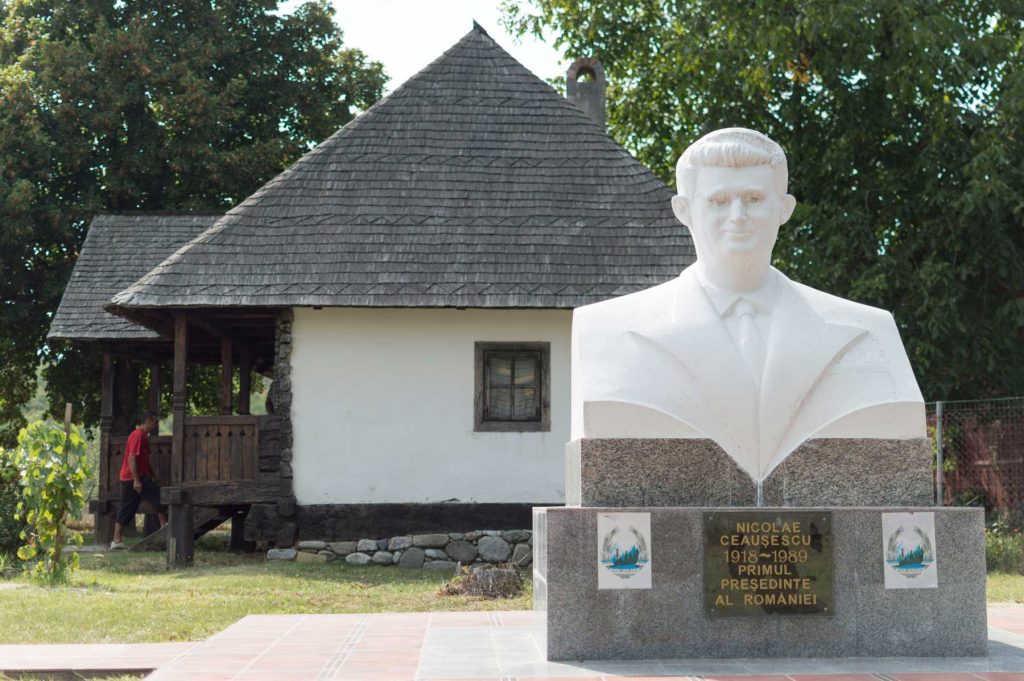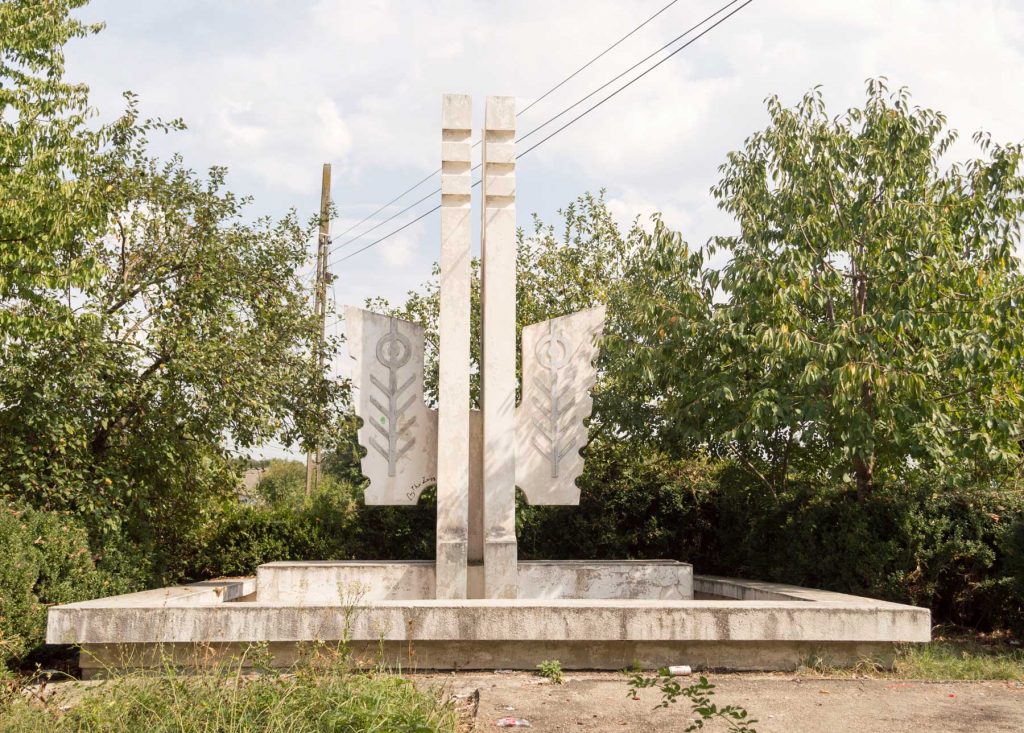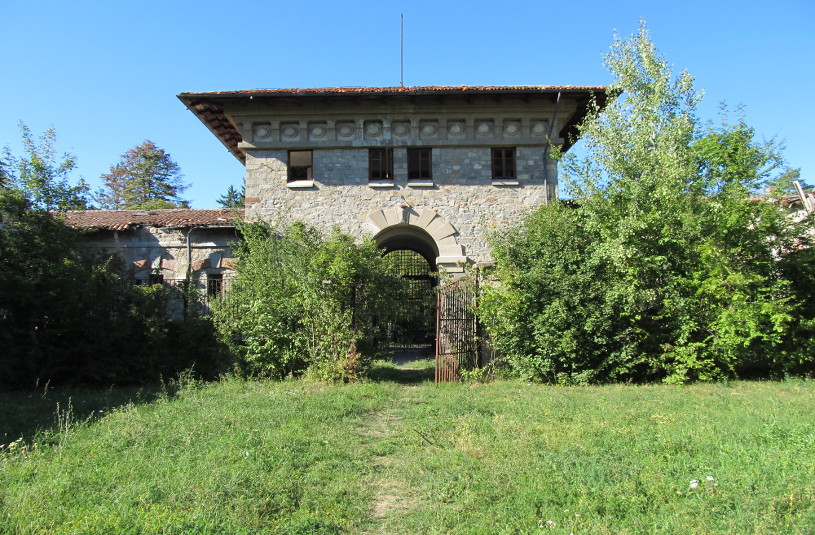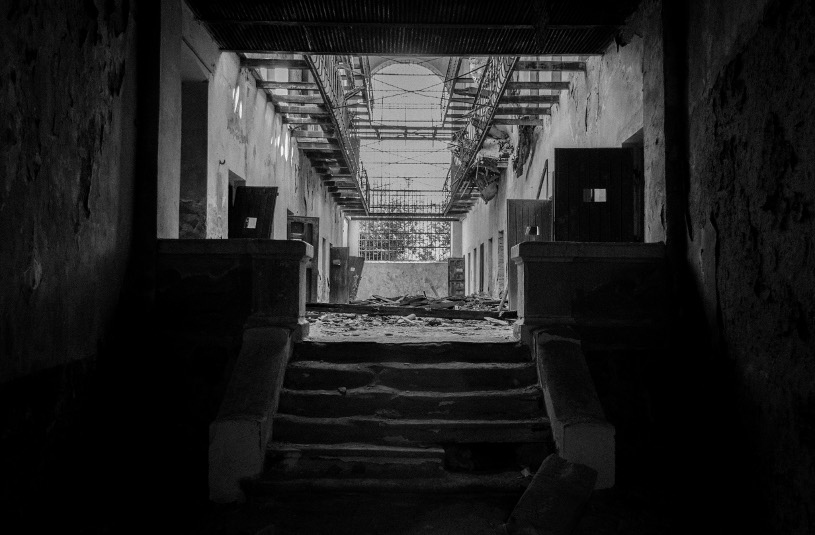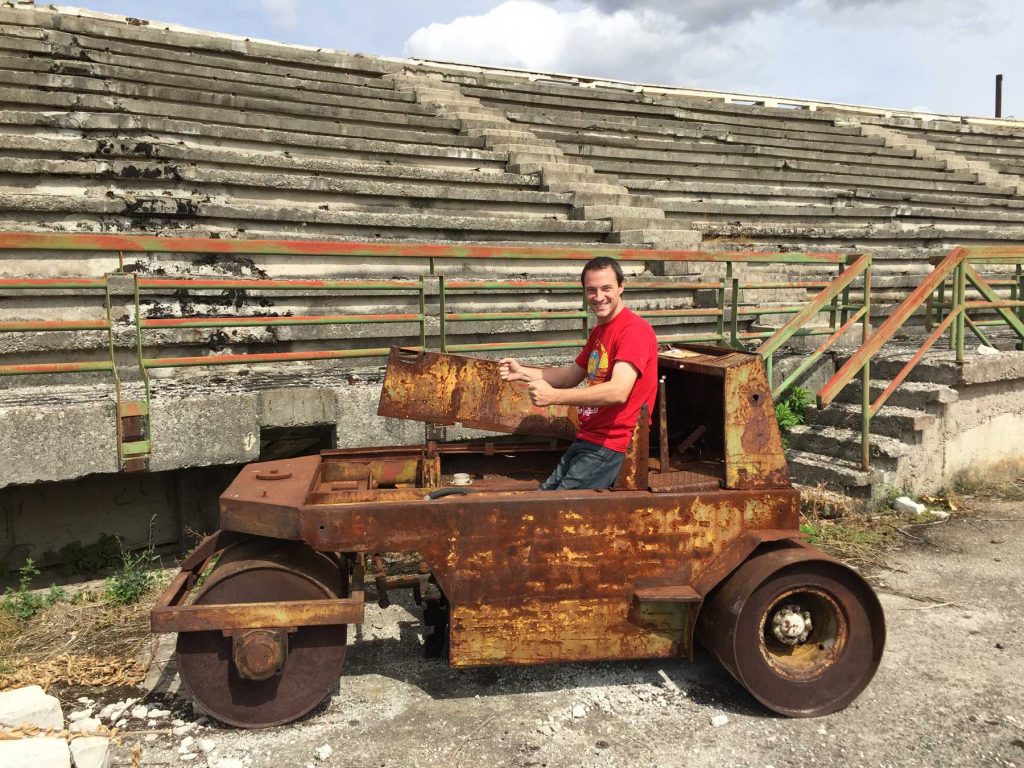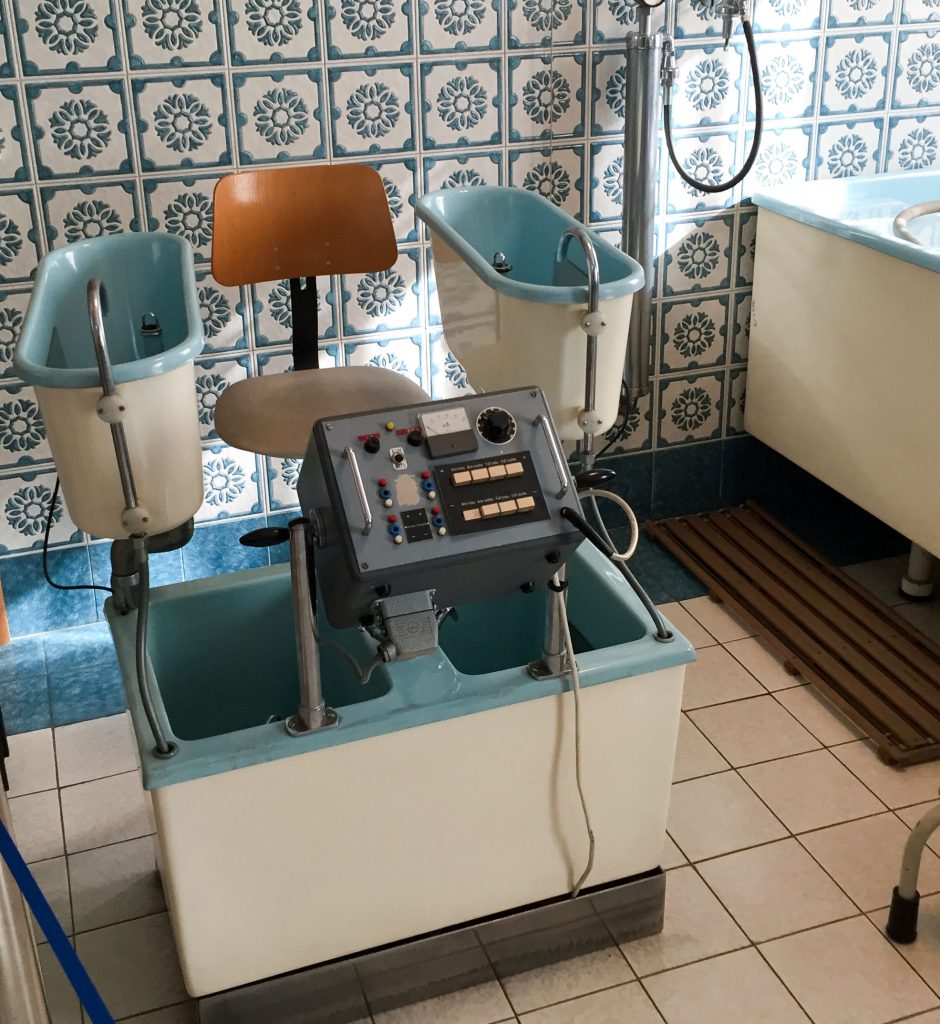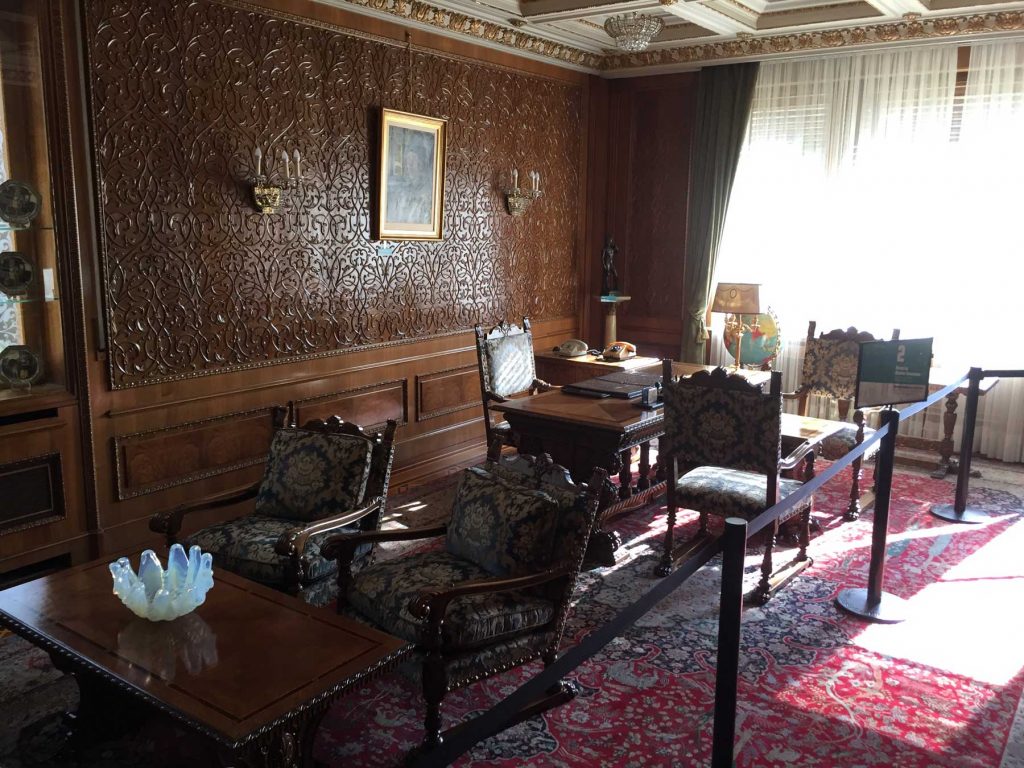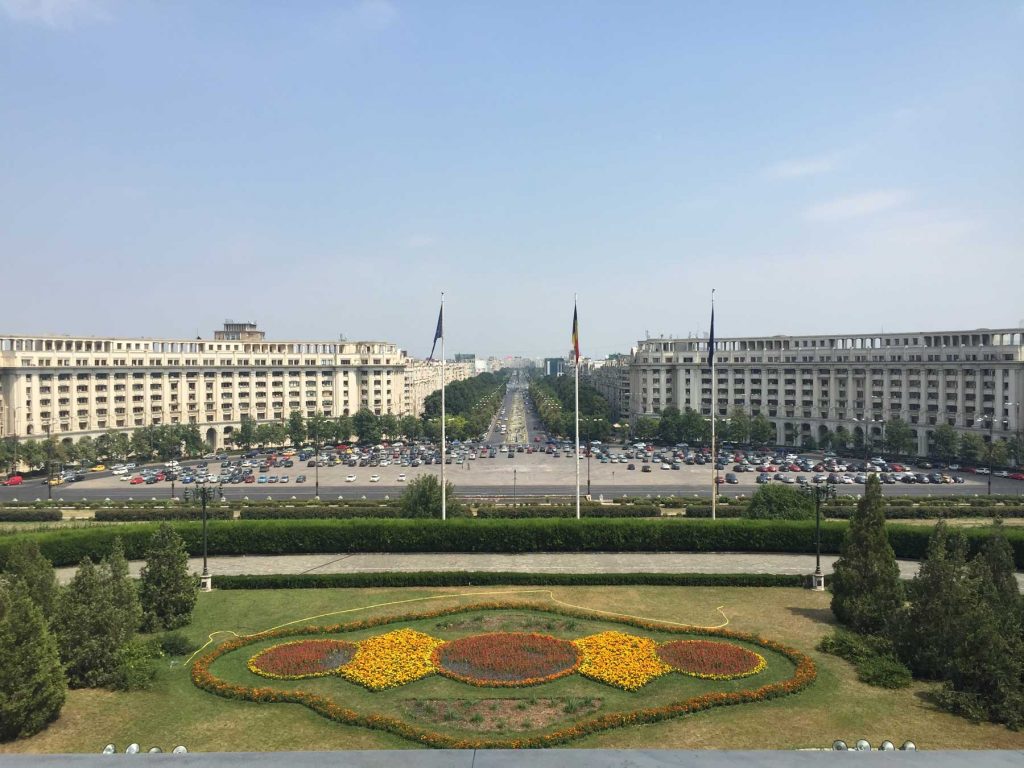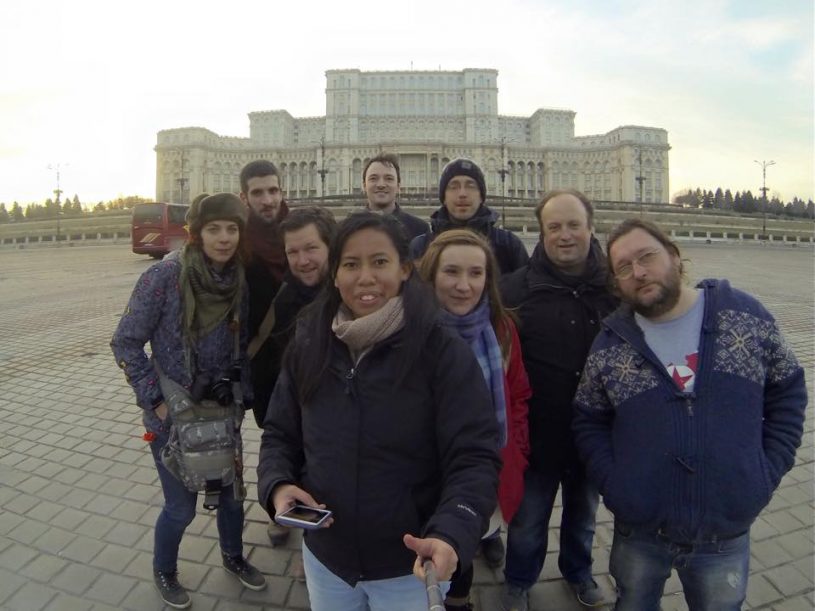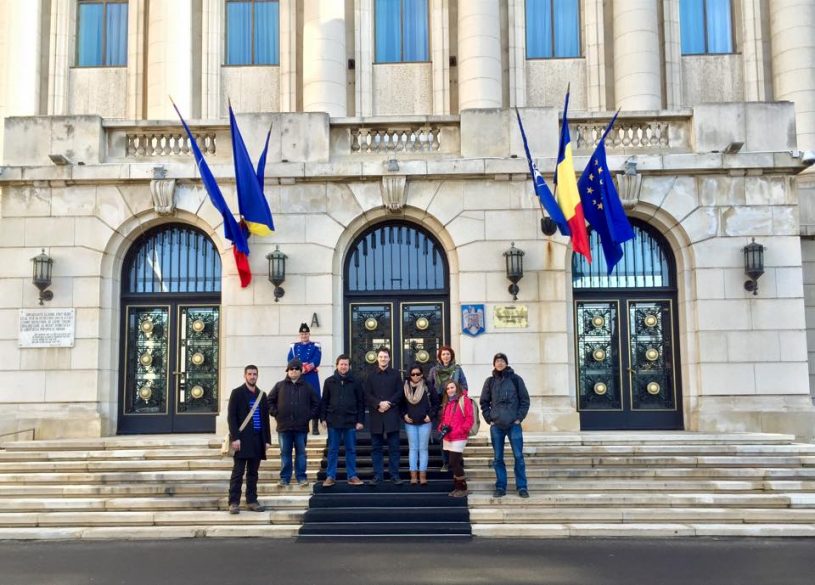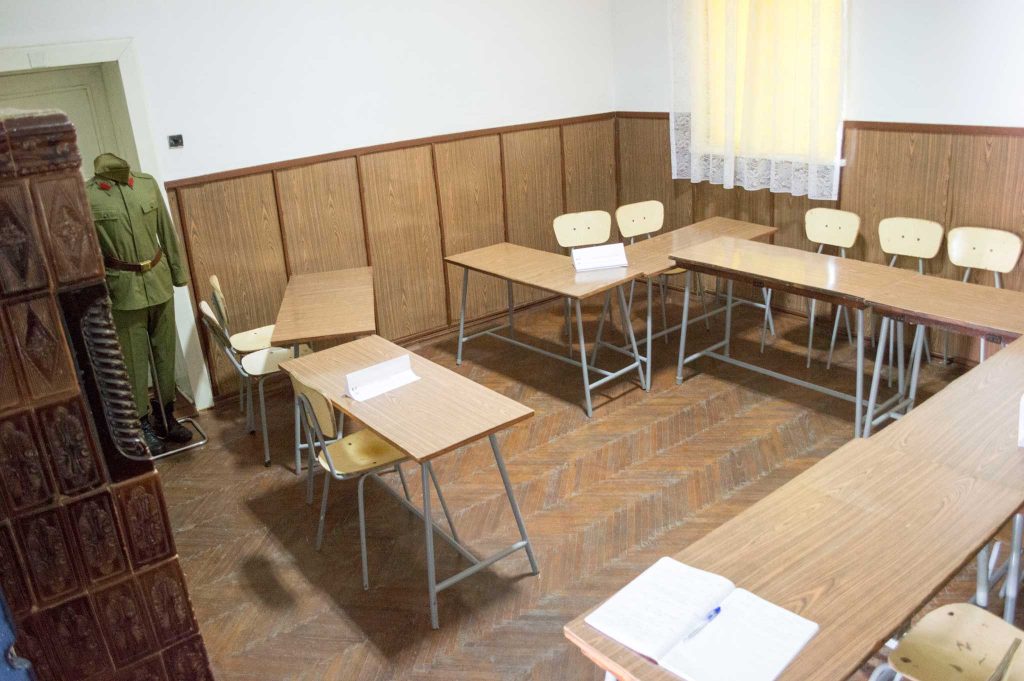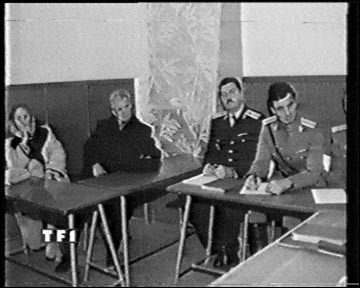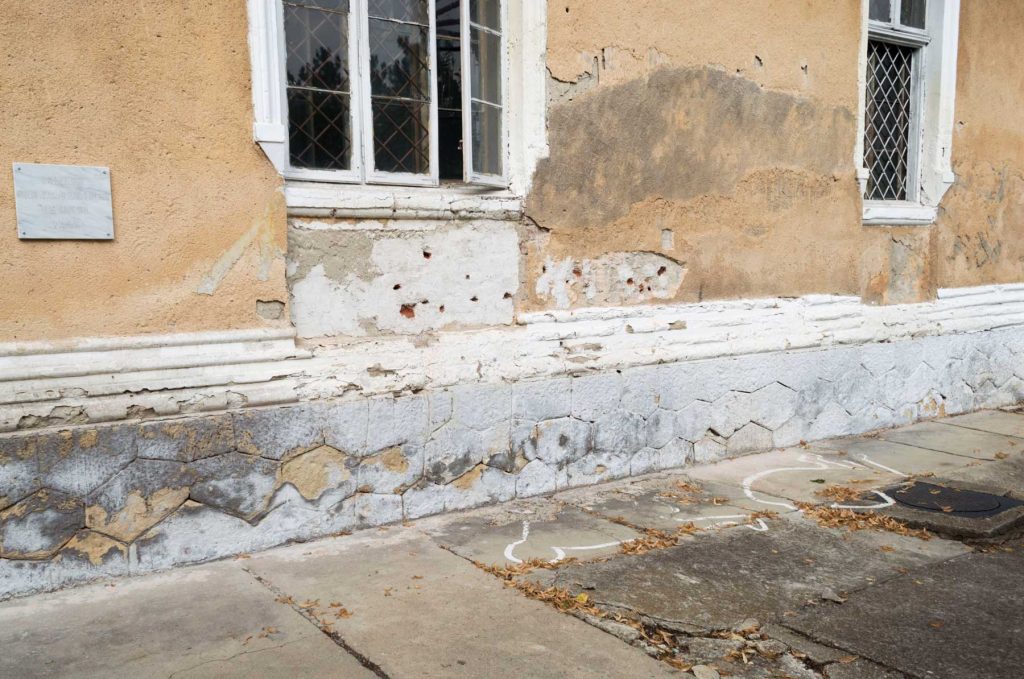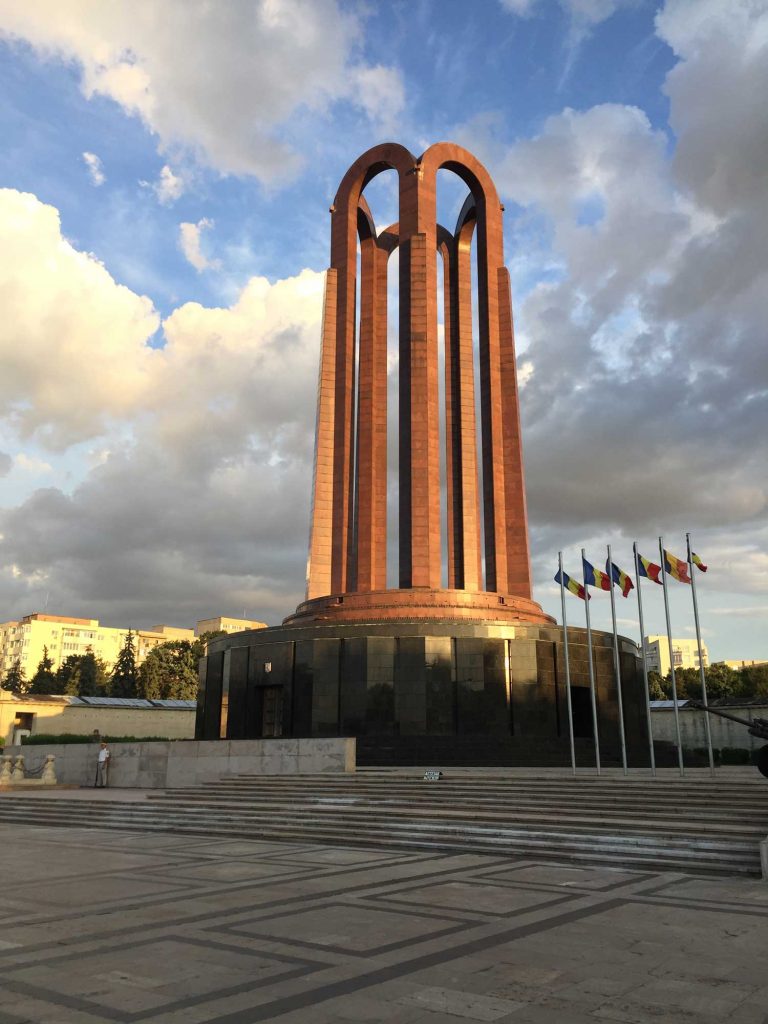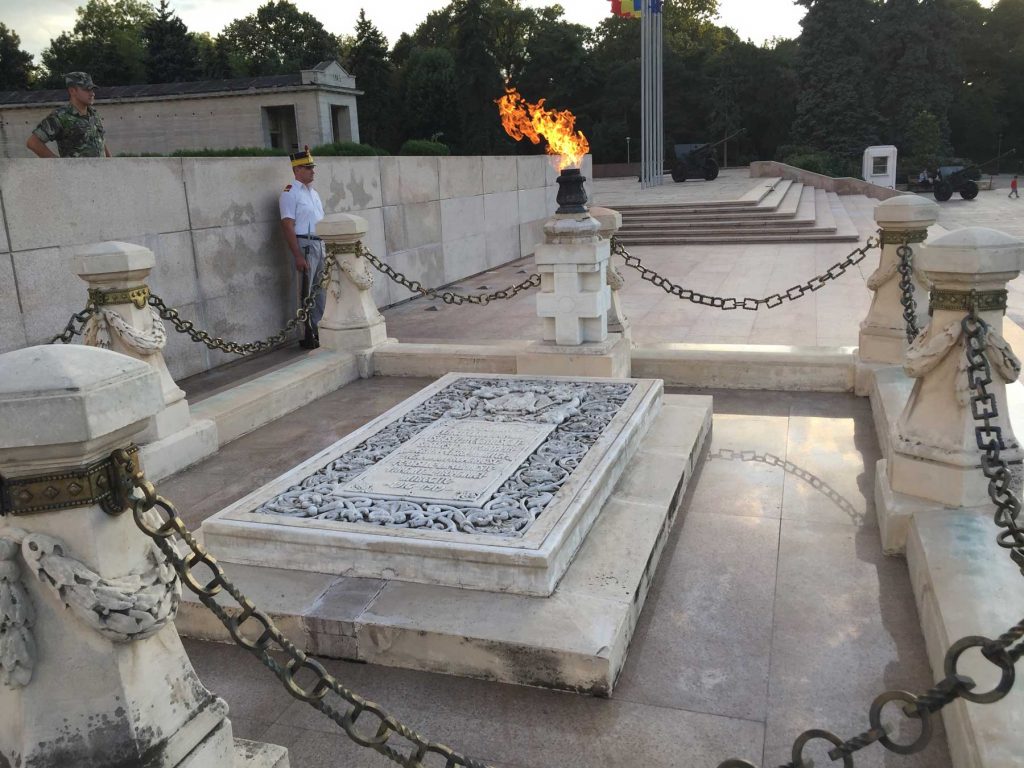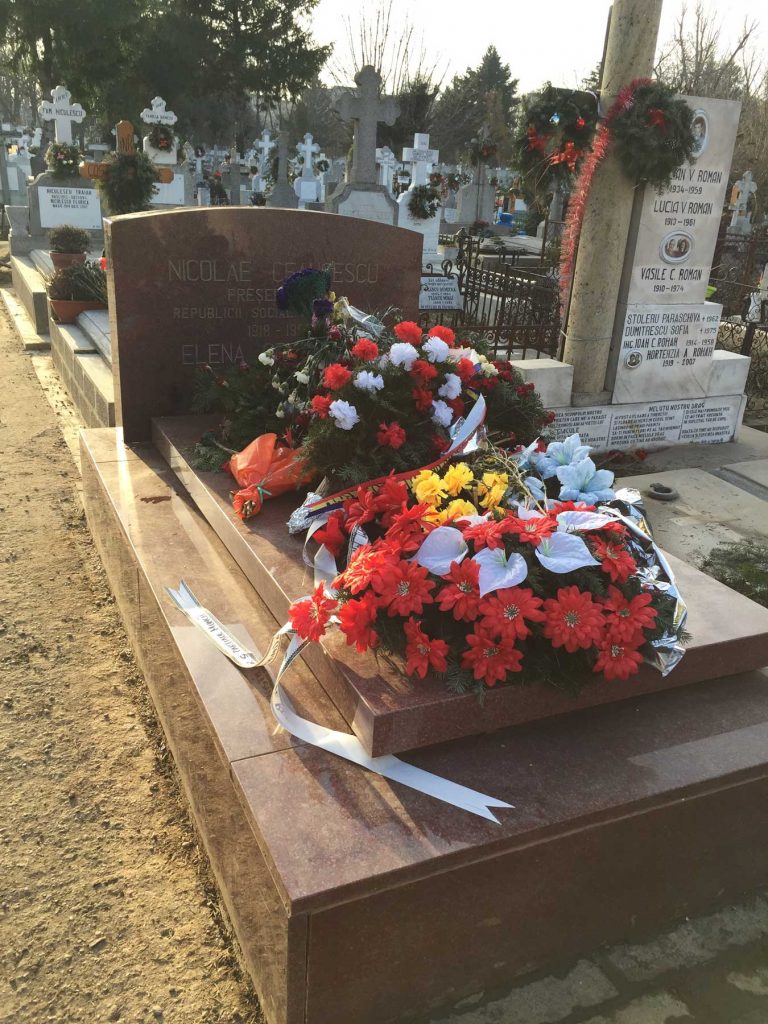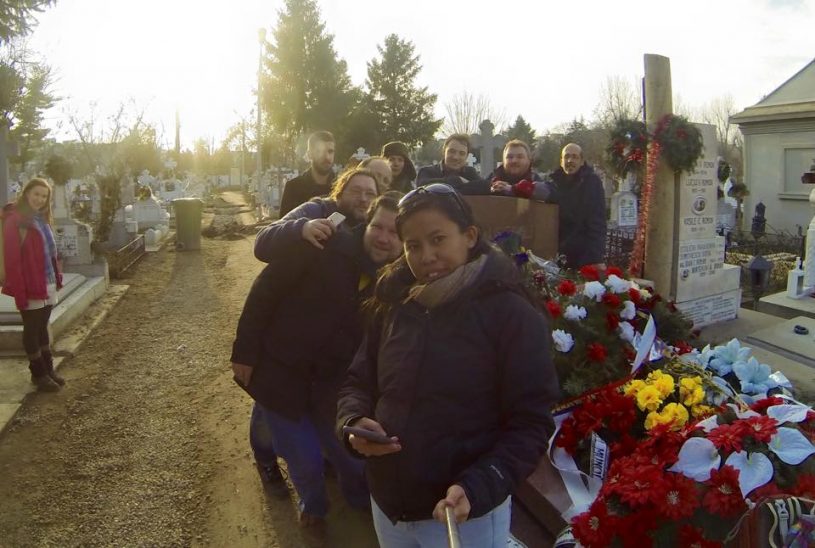Nicolae Ceaușescu was general secretary of the Romanian Communist Party and leader of the country from 1965 until his famous televised execution on Christmas Day 1989. He left an indelible mark on Romania, and like many former communist leaders around the world there are mixed feelings about him to this day in his home country. Here are our top 10 places to visit related to him, where you can get a real sense of the history of the period. You can visit them all with Young Pioneer Tours.
1. Birthplace of Nicolae Ceaușescu
Nicolae Ceaușescu was born in 1918 in this traditional house on the edge of the village of Scornicești, located 100 km west of Bucharest. Featuring a somewhat comical oversize concrete bust of the late leader in the garden, it’s also possible to visit an adjoining park straddling the nearby river, and across the street a monumental concrete fountain, now both abandoned and run down, in the way of so many Communist monuments whose subjects fell out of favour. The interior of the house is fitted out as it would have been during the dictator’s childhood, and sometimes it’s open for visits inside.
2. Doftana prison
In 1936, Ceaușescu was convicted of various charges relating to his communist activities, and spent two years in this prison, which is now abandoned. For those with an adventurous spirit it’s usually possible to jump over the fence for a look round.
3. Scornicești stadium
Ceaușescu aspired to modernise the country he ran, and he especially wanted to turn the small village of his birth into a model socialist town. Most old buildings (except his birthplace) were torn down, standard concrete apartments went up, factories were built (mostly abandoned today), but most notably he decided that the local football team was to be a model of socialist achievement.
The team was promoted to the equivalent of the Premier League (nobody dared to beat them) and a huge stadium was built befitting a team of their stature. However, after the 1989 revolution, the team went back to being a local side and the stadium was all but abandoned. Now the seats have been torn up, the grass is long and brown, and women toil in a sweatshop making garments in the space where the training facilities once were. The local team do still play there occasionally though.
4. Palatul Primaverii – Presidential residence
Palatul Primaverii, the Spring Palace, was the residence of the Ceaușescu family from Nicolae’s ascendency to power in 1965 until they fled Bucharest during the revolution in December 1989. Under construction for Ceaușescu’s predecessor, who some suggest was poisoned by the Soviets, upon his death Elena took over the project and determined the final decorative finishes of the lavish interiors. The side of the building facing the street is today rather unprepossessing and could easily be walked past. But inside, the features have been preserved as a record of the grand lifestyle of the Ceaușescus.
In common with residences of other deposed dictators around the world there is a great deal of gold finish in the bathrooms. Elena’s walk-in wardrobe is larger than most regular Communist-era apartments and has a huge collection of Chanel outfits and enough shoes to rival Imelda Marcos. In the basement is a curious collection of East German therapeutic machines, including steam cabinets and various hydrotherapy appliances, no doubt aimed at preserving eternal youth for the presidential family.
5. Palace of the Parliament
The Palace of the Parliament in central Bucharest is by far the most prominent built legacy of Ceaușescu. One of the largest buildings in the world, it was the centrepiece of the dictator’s plan to rebuild the city as a modern socialist utopia. Starting in the early 1980s, thousands of historic buildings were bulldozed to make way for the construction, which was of such a scale that the building is still not fully finished to this day. The materials and fittings are entirely of Romanian origin, designed to show off the skills of the country’s industries.
Hundreds of chandeliers, acres of luxury carpets and tonnes of marble were redirected from export sale, at a time when the country was desperate for foreign currency. At the time of the revolution there were calls to blow up the building, as a hated symbol of the former regime, but in the end it was decided not to waste the huge amount of effort and resources embodied in the construction.
6. Nicolae’s last speech
The former headquarters of the Central Committee of the Romanian Communist Party (now the Ministry of Internal Affairs building) in Bucharest, where the tyrant gave his final speech to the Romanian people. Standing on the balcony, his televised address to a large crowd of workers who had been rounded up for the occasion was an attempt to shore up support after went wrong when they turned against him and started heckling.
The startled look on his face, clearly visible in footage of the event available online, still provokes debate as to what extent Ceaușescu might have been aware of the poor conditions of the majority of Romanians at that time, and whether he might have been kept in the dark by his own advisors. The next day he tried again to address the masses but by that time they were in open rebellion and he was forced to flee to his private helicopter on the roof of the building.
7. Trial of the Ceaușescus
Anyone who was older than about 12 in 1989 probably remembers some of the most memorable footage broadcast on TV that Christmas – the trial and execution of Nicolae and Elena Ceaușescu. The trial took place in the town of Târgoviște, a few hours from Bucharest. The building has now been turned into a small museum, and the room where the trial took place has been preserved exactly how it was in that famous video where the Ceaușescus defiantly but vainly defended themselves in the show trial lasting only about an hour.
8. … And Execution
In the same complex, you can visit the courtyard out the back where the couple were executed by firing squad only minutes after their death sentences were handed down. Slightly bizarrely, a cellphone mast now stands where the soldiers who fired the fatal shots must have been, but the bullet holes are clearly visible in the wall, and the outlines of the bodies are painted on the ground. It’s all very recognisable from the iconic grainy TV footage from boxing day 1989 which brought news of the only violent end to a communist regime at the end of the Cold War while we ate left-over Brussels sprouts.
9. Intended burial place of the Ceaușescus
The snappily-named “Monument of the Heroes for the Freedom of the People and of the Motherland, for Socialism” was built overlooking Bucharest’s Carol Park as the intended final resting place of the country’s Communist leadership. It consists of a distinctive, tall arched structure constructed from Romanian granite.
By the time of the Ceaușescus’ death there were a couple of sets of remains interred in the mausoleum, but of course the new government refused to allow him to be buried there as planned, and eventually the remains already there were exhumed and removed elsewhere, and the monument was turned into a national war monument, complete with an eternal flame and honour guard to the unknown soldier.
10. Actual burial place of the Ceaușescus
Nicolae and Elena were originally buried in separate graves in the military section of the huge Ghencea cemetery in a suburb of Bucharest. Rumours persisted however that the bodies were not really those of the Ceaușescus, so in 2010 they were finally exhumed for DNA testing, which proved the conspiracy theories unfounded. The bodies were re-buried together under a simple but impressive slab of red marble. Visitors regularly leave flowers on the tomb.
Check out our Ceaușescus extension tour here, that can be added onto the Transnistria National Day tour!



